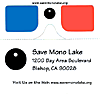


Stereoscopy, stereoscopic imaging or 3-D (three-dimensional) imaging is any technique capable of recording three-dimensional visual information or creating the illusion of depth in an image. The illusion of depth in a photograph, movie, or other two-dimensional image is created by presenting a slightly different image to each eye. Many 3D displays use this method to convey images. It was first invented by Sir Charles Wheatstone in 1838. Stereoscopy is used in photogrammetry and also for entertainment through the production of stereograms. Stereoscopy is useful in viewing images rendered from large multi-dimensional data sets such as are produced by experimental data. Modern industrial three dimensional photography may use 3D scanners to detect and record 3 dimensional information. The 3 dimensional depth information can be reconstructed from two images using a computer by corresponding the pixels in the left and right images. Solving the Correspondence problem in the field of Computer Vision aims to create meaningful depth information from two images.
Traditional stereoscopic photography consists of creating a 3-D illusion starting from a pair of 2-D images. The easiest way to create depth perception in the brain is to provide to the eyes of the viewer two different images, representing two perspectives of the same object, with a minor deviation similar to the perspectives that both eyes naturally receive in binocular vision.
3D
Glasses For All Occasions
Depending on Your Special Event or Promotion...
You Can Select From a Wide Variety of 3D Glasses Applications and Styles!
|
|
Anaglyph 3D Glasses -Lenses of red/ blue or red/green for interpreting anaglyph art. Used for viewing 3D comics, 3-D web sites on the internet, movies and TV, 3D games, printing and art. | |
|
|
Polarized 3D Glasses - Both linear and circular polarizing lenses. Polarized 3D glasses are used primarily for 3D laser shows, 3d ride simulators, multimedia displays, corporate |
Polarized Glasses |
|
|
Pulfrich 3D Glasses - One dark and one clear lens. Pulfrich 3D Glasses work with objects or scenes moving horizontally across the field of view. This is one of several ways to experience broadcast TV in 3-D. The Pulfrich method of 3D is used for TV, video and 3D computer displays. |
Pulfrich Glasses |
|
|
Decoders - Lenses of red/red, blue/blue or any identical colors. Decode secret messages, games, contests and sweepstakes. A great way to promote new products, win prizes and attract attention at trade shows. |
Decoder Glasses |
|
|
Hand Held Viewers - Can be made with any lens configuration and has no temple stems. |
Hand Held |
|
|
Bind-ins - Perfect for direct mail campaigns, binding into publications and for in-pack and on-pack promotion |
 Bind-Ins |
|
|
Custom Glasses - Whatever you want...We can help create it! We have years of experience and references and happy to share them. Give us a call at 1-800-821-5122 (USA) and talk to one of our seasoned "3D" staff. |
Custom Glasses |
|
|
Proview Professional 3D Glasses - The ultimate in 3D viewing! Optical
quality cast acrylic lenses mounted in unbreakable flexible nylon frames.
Plastic 3D Glasses – Pro-X Professional Anaglyph 3D Glasses. Our more contemporary style for gamers and the like. |
|
|
|
|
 Proview Clip-Ons |
All Products, Images & Text Copyright © 2001 Rainbow Symphony, Inc.
6860 Canby Ave. Suite 120 Reseda CA , 91335
(818) 708-8400 (818) 708-8470 Fax
Copyright 2006 3D Glasses Direct All rights reserved
